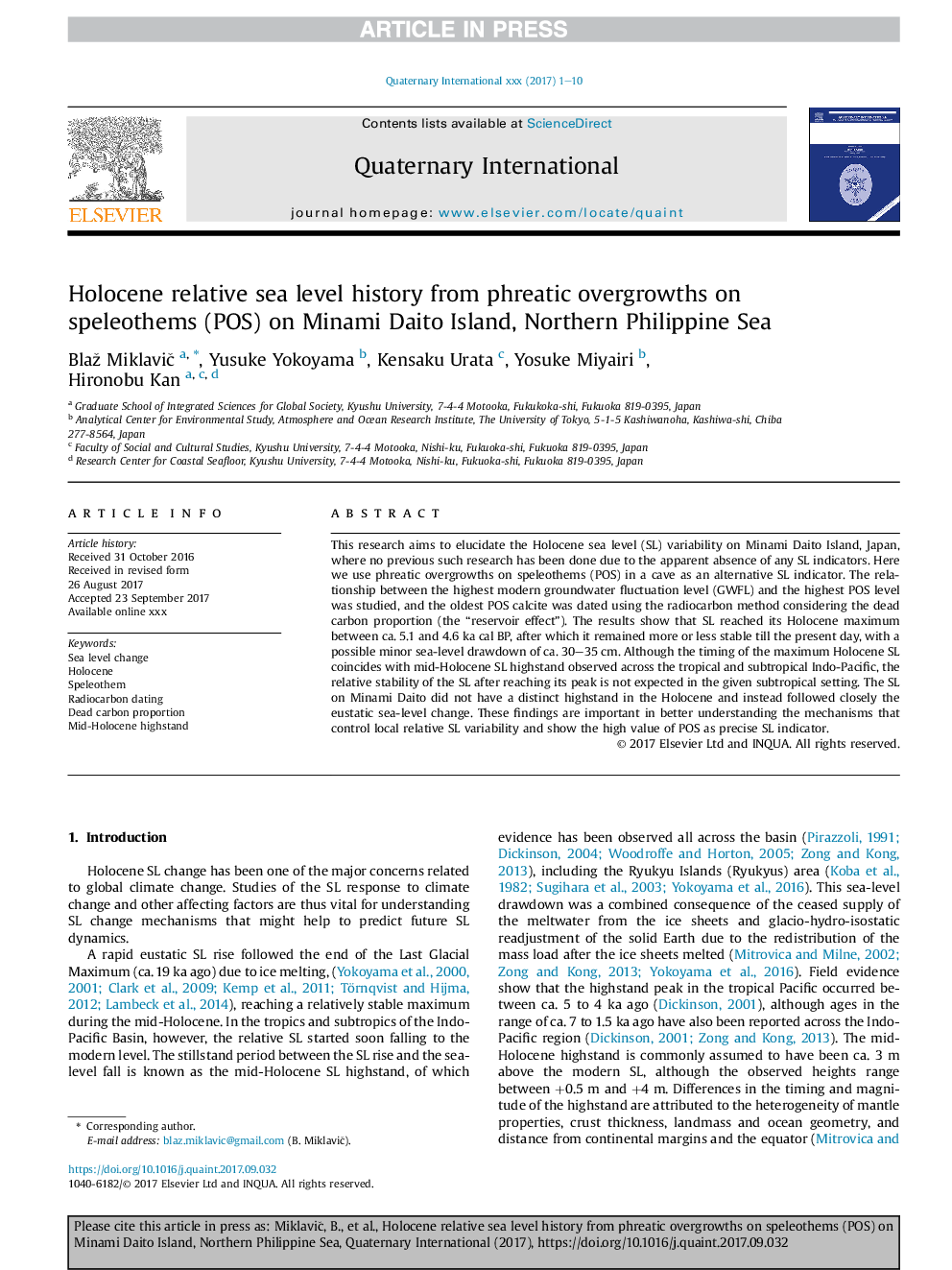| Article ID | Journal | Published Year | Pages | File Type |
|---|---|---|---|---|
| 7450039 | Quaternary International | 2018 | 10 Pages |
Abstract
This research aims to elucidate the Holocene sea level (SL) variability on Minami Daito Island, Japan, where no previous such research has been done due to the apparent absence of any SL indicators. Here we use phreatic overgrowths on speleothems (POS) in a cave as an alternative SL indicator. The relationship between the highest modern groundwater fluctuation level (GWFL) and the highest POS level was studied, and the oldest POS calcite was dated using the radiocarbon method considering the dead carbon proportion (the “reservoir effect”). The results show that SL reached its Holocene maximum between ca. 5.1 and 4.6 ka cal BP, after which it remained more or less stable till the present day, with a possible minor sea-level drawdown of ca. 30-35Â cm. Although the timing of the maximum Holocene SL coincides with mid-Holocene SL highstand observed across the tropical and subtropical Indo-Pacific, the relative stability of the SL after reaching its peak is not expected in the given subtropical setting. The SL on Minami Daito did not have a distinct highstand in the Holocene and instead followed closely the eustatic sea-level change. These findings are important in better understanding the mechanisms that control local relative SL variability and show the high value of POS as precise SL indicator.
Related Topics
Physical Sciences and Engineering
Earth and Planetary Sciences
Geology
Authors
Blaž MiklaviÄ, Yusuke Yokoyama, Kensaku Urata, Yosuke Miyairi, Hironobu Kan,
